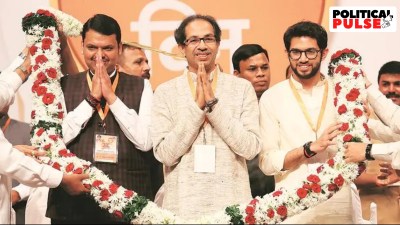- India
- International
Interview with Ola’s chief operating officer: ‘Can turn profitable tomorrow if we stop reacting to competition’
Ola’s chief operating officer Pranay Jivrajka, in conversation with Indian Express.
 Ola’s chief operating officer Pranay Jivrajka.
Ola’s chief operating officer Pranay Jivrajka.
The online taxi hailing sector in India has become highly competitive, even with just two major players in the market. Ola’s chief operating officer Pranay Jivrajka, in conversation with Pranav Mukul, speaks about how the local company plans to deal with a competitor that is several times its size and its learnings from the recent development in China where a domestic player in the same industry did not lose ground to a global company. Edited excerpts:
You face immense competition from a player that is several times your size globally. What are your plans to maintain your market share?
There are two ways through which you can be in the game and be the market leader in the industry. One is through innovation by providing more asset utilisation, using economies of scale, bringing down the costs, passing it on to the customers and the drivers and technology innovations. The second way is what the competition is doing today, which is through capital dumping. So I think it’s important that there is enough competition in the market. If you see, in the past three-four years, no new player is operating in the cabs segment in key markets. There are people doing intercity cabs, more than 20 players have tried bikes, there are people doing auto-rickshaws. But there’s irrational competition, which is restricting anyone else from entering the market.
Watch What Else is Making News
Do you think there’s more space in the market for new players to enter?
There’s a lot of space for more players to enter, because India is a market that is evolving at a very fast pace. There’s a lot of demand out there, and ours is a supply constrained market. At a car ownership level, it is five per cent, which is lower than the developing markets, and way lower than developed markets, which is over 50-60 per cent. The public transport infrastructure is not up to the mark and isn’t catching up with the rise in urbanisation we’ve seen in the past ten years. All these parameters raise the need for commute options, which is fulfilled by aggregators and other modes of mobility.
What is your horizon for turning profitable?

We can become profitable tomorrow if we stop reacting to competition and stop incentives in key markets, because rest everything is profitable for us. The fundamental is around the sustainability of the ride sharing economy. Today, more than 80 per cent of our markets are profitable, sustainable and growing at a good pace. Most of the categories we are in, except for cabs in the top markets, we are profitable. The reason why we’re not profitable in the key markets, which also form the chunk of our business in the cabs space, is because of capital dumping. And when I say capital dumping, what I mean is not about the foreign direct investment, but dumping primarily means using profits from markets outside India to attempt and monopolise the market here, which is what we’re seeing is happening and what foreign players are doing. You generate profits outside India in dollars, pounds and other currencies and dump it in India.
But doesn’t Ola engage in incentivising drivers as well from its profits made in other markets?
We do it only in key markets in the cabs business because we face irrational competition, and is a response to what our competitor does. We spend one-third of what the competitor spends on every ride to maintain our market share and that’s because we have better asset utilisation. A driver who does 15 trips in Ola in ten hours, would do eight trips with the competitor. Almost 95 per cent of this amount to maintain the market share is spent towards the driver, customer discounting is very small as compared to the scale that we’re carrying.
What have been your learnings from the China episode where a local player eventually overpowered the foreign competitor?
India and China are completely different markets. However, in terms of the ride sharing nuances and the aspects, which potentially made a foreign player exit China, is the fact that China had strong regulations around predatory pricing, and what we’ve seen is this is what players do in an attempt to monopolise the market. The capital which we’re seeing is being dumped on the same set of drivers instead of promoting more skill development and getting more drivers to increase supply, which is the real problem to be solved. Being the local player we’re bringing grounds up innovation and not importing technology from outside and slightly customising it to suit the domestic requirements. Things like Ola Play is necessary for India because there is no other country where you spend an average of 45-60 minutes in a car going from point A to point B.
Apr 20: Latest News
- 01
- 02
- 03
- 04
- 05






































